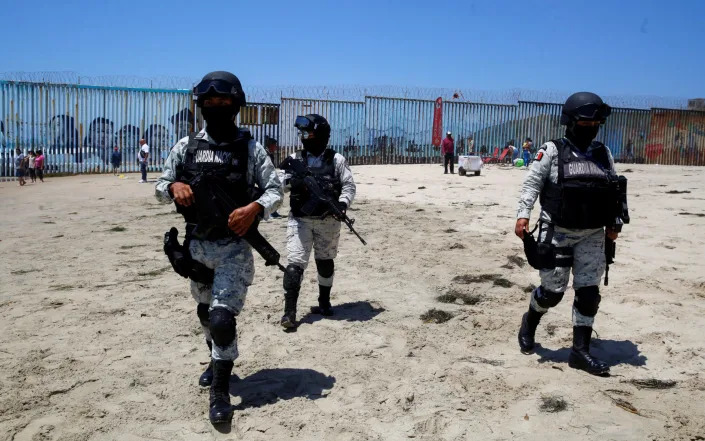On Thursday, June 30th, the US Supreme Court struck down the “Remain in Mexico” policy that forced asylum seekers who crossed illegally into the US to wait in Mexico while their cases were decided in America’s courts.
The tougher approach had led to an explosion of migrant camps in this northwestern corner of Mexico – in 2016 there were just five, now there are more than 30.

President Joe Biden branded the Trump-era scheme “inhumane,” while critics have said the policy – officially called Migrant Protection Protocols – exposed asylum seekers to dangerous conditions in Mexico.
But Republicans have argued that it deters fraudulent asylum claims, eases pressure on inundated temporary shelters in the US, and stop claimants from simply disappearing once in the country.
Mr. Biden suspended it on his first day in office, but it remained in place because of a legal challenge from Texas that the Supreme Court has overruled and sent back to the lower courts, which will likely see it repealed.
Greg Abbott, the Texas Governor, said the decision would “only embolden the Biden Administration’s open border policies.”
The border state is already struggling to cope with a record number of illegal crossings, with 239,416 arrests made on the southern border in May alone.
US Customs and Border Protection predicts that by September, there will have been more than two million interceptions in the previous 12 months, up from 1.76 million the year before.
Passing through Tijuana
The Supreme Court’s ruling is likely to boost those numbers – those who had been sent to Mexico while their claims were being heard may soon be able to enter America to complete the process.
Many of them are in Tijuana, Mexico’s second-biggest city, with a population of around two million people.
In May, new research by the Washington Office on Latin America found that at least 300,000 people have migrated to or through Tijuana in the past year. More, they predict, are coming.
On a hot July afternoon, the center of the city is bustling with mariachi bands, queues for Taco stands, and the smell of sizzling steak wafting through the air.
But looming large on the horizon, the imposing wall gives a constant reminder of Tijuana’s sensitive location. In the distance, American helicopters swoop low, while Border Patrol cars race along the dusty track behind the beams.
It is not just migrants they are trying to keep out.
Tijuana is, by some metrics, the deadliest city in the world, with rival drug cartels fighting for control of the lucrative supply route to America’s West Coast. In June alone, the city registered at least 196 murders, at a rate of nearly seven a day.
The murder rate here is 138 per 100,000 residents. By comparison, London is around 1.5.
It is not a place where migrants from Guatemala, Honduras, Nicaragua, and elsewhere want to stay for long.
The “Remain in Mexico” policy was not the only thing holding them back.

During the pandemic, Mr. Trump also brought in Title 42, which allows the government to quickly expel migrants without a chance to ask for asylum, casting aside US law and an international treaty on the grounds of fighting Covid-19.
Mr. Biden has already tried to lift the order, unsuccessfully, but it is expected to be the next domino to fall.
“Remain in Mexico” has seen around 70,000 people sent back across the border who may now try to re-enter the US.
But Title 42 has led to more than two million expulsions in the same period – 750,000 under Mr. Biden.
Ending Title 42 “is going to cause the single largest flux of illegal immigration in our history,” according to National Border Patrol Council President Brandon Judd.
“We know this is going to cause chaos of epic proportions.”
Looking for a better life
It is not hard to find people here who are willing to try anything in search of a better life in the US.
Just last week, some 53 migrants died in the back of a lorry in America’s deadliest human smuggling incident. New court documents show that the alleged driver, Homero Zamorano, Jr, 45, did not know that the air conditioning had stopped working, as they suffocated to death.
But that has not deterred people here. Lorena, a mother-of-three from southern Mexico, has already crossed the border three times this year and been sent back under Title 42 measures on each occasion.
“I will not stop. I have my sons in America, in New Jersey, but I cannot come in,” she said. “They keep saying Covid but I don’t have Covid. I know I am not the only one. It is just a matter of time.”
Source: El Imparcial






